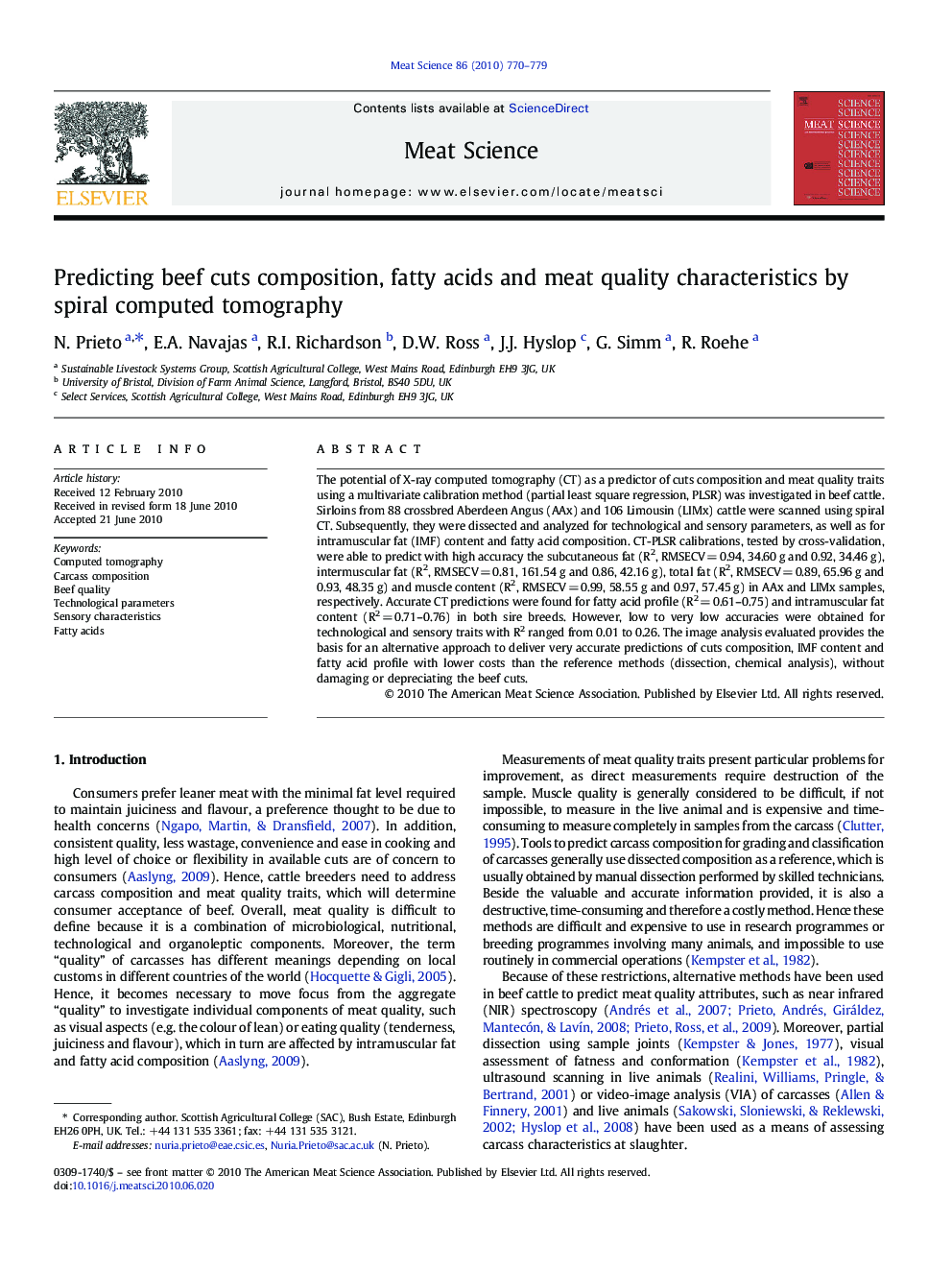| Article ID | Journal | Published Year | Pages | File Type |
|---|---|---|---|---|
| 2450639 | Meat Science | 2010 | 10 Pages |
The potential of X-ray computed tomography (CT) as a predictor of cuts composition and meat quality traits using a multivariate calibration method (partial least square regression, PLSR) was investigated in beef cattle. Sirloins from 88 crossbred Aberdeen Angus (AAx) and 106 Limousin (LIMx) cattle were scanned using spiral CT. Subsequently, they were dissected and analyzed for technological and sensory parameters, as well as for intramuscular fat (IMF) content and fatty acid composition. CT-PLSR calibrations, tested by cross-validation, were able to predict with high accuracy the subcutaneous fat (R2, RMSECV = 0.94, 34.60 g and 0.92, 34.46 g), intermuscular fat (R2, RMSECV = 0.81, 161.54 g and 0.86, 42.16 g), total fat (R2, RMSECV = 0.89, 65.96 g and 0.93, 48.35 g) and muscle content (R2, RMSECV = 0.99, 58.55 g and 0.97, 57.45 g) in AAx and LIMx samples, respectively. Accurate CT predictions were found for fatty acid profile (R2 = 0.61–0.75) and intramuscular fat content (R2 = 0.71–0.76) in both sire breeds. However, low to very low accuracies were obtained for technological and sensory traits with R2 ranged from 0.01 to 0.26. The image analysis evaluated provides the basis for an alternative approach to deliver very accurate predictions of cuts composition, IMF content and fatty acid profile with lower costs than the reference methods (dissection, chemical analysis), without damaging or depreciating the beef cuts.
